Disclosure: This article contains affiliate links. We may earn a commission from purchases at no extra cost to you, which helps our travel content.
Standing on the edge of Tammerkoski rapids, I watch the autumn light cast long shadows across the imposing red-brick facades that once housed Finland's industrial revolution. The water that once powered these textile mills still rushes with purpose, but today it serves as the backdrop to one of Europe's most successful industrial revitalization stories. Tampere—Finland's largest inland city nestled between two vast lakes—was once known as the 'Manchester of Finland,' its skyline dominated by smokestacks and the rhythm of factory life. Now, these same structures pulse with a different energy: art installations illuminate former boiler rooms, entrepreneurial startups occupy old cotton warehouses, and the clatter of looms has given way to the gentle hum of espresso machines and animated conversation. As an editor who's spent decades helping others tell their stories, I find myself particularly drawn to places undergoing narrative transformations. Tampere's story is one of remarkable editing—preserving the structural integrity of its industrial past while boldly rewriting its purpose for future generations.
Tampella: From Cannons to Culture
My exploration begins at Tampella, once Finland's premier heavy industry complex producing everything from locomotives to artillery. Now, this sprawling district represents the heart of Tampere's urban renaissance. The transformation reminds me of editing manuscripts—keeping the powerful framework while reimagining the content within.
Walking through the district on a crisp October morning, fallen yellow leaves crunching underfoot, I'm struck by how seamlessly old meets new. The Museum Centre Vapriikki, housed in the former engineering works, contains over a dozen museums under one vast industrial roof. I spend hours wandering through exhibitions ranging from natural history to Finnish ice hockey culture, each gallery thoughtfully designed within the building's original structural elements.
Outside, I follow the sound of indie rock to Klubi, a legendary music venue housed in what was once a workers' cafeteria. The venue's industrial bones—exposed pipes, soaring ceilings, original brick—create perfect acoustics for the Finnish band performing tonight. Over a craft beer, I chat with locals who tell me that virtually every Finnish musician of note has performed on this stage.
'The factories shaped our grandparents' lives through labor,' says Matti, a third-generation Tampere resident. 'Now they shape our lives through leisure and creativity. It's like the buildings themselves have been given a second draft.'

💡 Pro Tips
- Visit Museum Centre Vapriikki on weekday mornings to avoid crowds
- Check Klubi's event calendar before your trip—tickets for popular acts sell out quickly
- The Vapriikki Museum Pass gives access to all exhibitions for 48 hours
Finlayson: The Creative Quarter
If Tampella represents Tampere's heavy industrial past, then Finlayson embodies its textile heritage. Founded by Scottish engineer James Finlayson in 1820, this cotton mill complex once employed thousands and dominated Finland's textile industry. Today, it's the creative heart of the city—a warren of design studios, media companies, restaurants, and cultural spaces that retain their industrial character while embracing contemporary function.
I begin at the Finnish Labour Museum Werstas, where original machinery and personal accounts bring to life the challenging conditions workers once faced. The contrast between past and present is particularly striking when I step from these exhibits into the adjacent Finlayson Art Area, where avant-garde installations occupy former production floors.
For lunch, I settle into Finlaysonin Palatsi, a restaurant housed in the factory owner's neo-renaissance palace. Over mushroom soup and rye bread, I flip through my travel notebook, jotting observations about how the building's opulence stands in stark contrast to the utilitarian factory structures just meters away—a physical manifestation of industrial-era class divisions.
The afternoon finds me browsing Workery, a concept store showcasing Finnish design. I'm particularly drawn to textiles that reference Finlayson's manufacturing heritage while employing contemporary patterns. The sales assistant tells me many designers here draw inspiration from the building itself—the geometric patterns of brick walls, the rhythm of window placements, the industrial color palette.

💡 Pro Tips
- The Finlayson area is compact but dense with attractions—allow at least half a day to explore properly
- Many studios in the area are working spaces—look for 'open studio' signs before entering
- Finlaysonin Palatsi restaurant requires reservations for dinner but usually accommodates walk-ins for lunch
Navigating Between Districts: The Rapids Walk
Connecting Tampere's revitalized industrial zones is the Tammerkoski Rapids Walk—a pedestrian pathway that follows the powerful channel of water that originally powered the factories. This linear park offers both a practical route between attractions and a contemplative space to understand how water shaped the city's destiny.
I begin at the northern end near Näsinneula, Finland's tallest observation tower, and make my way south along the rapids. The path alternates between elevated boardwalks and stone pathways, with frequent viewing platforms extending over the rushing water. The autumn colors reflect in the churning water below, creating a kaleidoscope effect that's particularly mesmerizing at sunset.
The walk reveals Tampere's industrial evolution in chronological order—each bridge crossing brings you to a different era of development. Interpretive signs detail how the rapids were harnessed, channeled, and engineered to maximize power generation. I'm fascinated by the hydraulic engineering that made industrialization possible here, transforming a natural feature into a precision tool for manufacturing.
Midway along the route, I stop at Tallipiha Stable Yards, a collection of wooden buildings once serving the factory owners' horses, now housing artisan workshops and cafés. I warm up with cardamom-spiced coffee and korvapuusti (Finnish cinnamon rolls) while reviewing photos on my travel camera. The camera's ability to capture both the architectural details of the factories and the dynamic movement of the rapids has been invaluable throughout this trip.
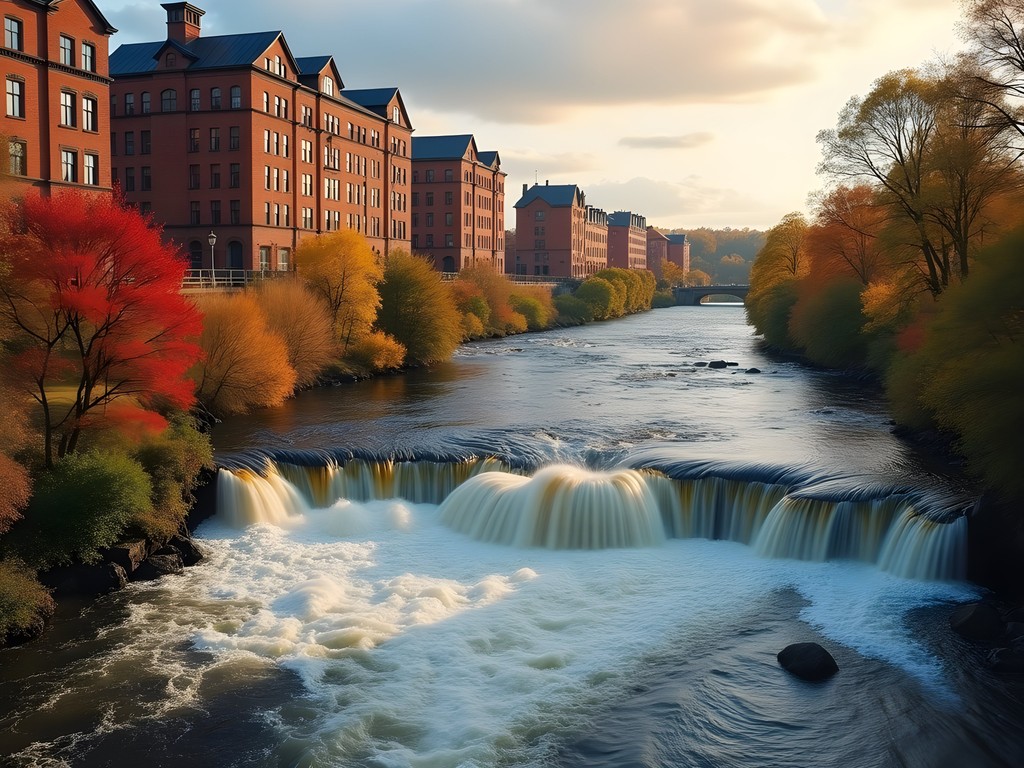
💡 Pro Tips
- The Rapids Walk is about 2km end-to-end—wear comfortable shoes
- The pathway is well-lit but bring a headlamp if exploring after dark in autumn when days shorten quickly
- Several hydroelectric plants along the route offer tours—book in advance through Visit Tampere
Hiedanranta: Witnessing Transformation in Progress
While Tampella and Finlayson represent completed revitalization projects, Hiedanranta offers something different: the chance to witness industrial transformation in its raw, unfinished state. Located on the shores of Lake Näsijärvi, this former pulp mill complex is Tampere's newest development area—a living laboratory where artists, urban planners, and community groups are actively co-creating the city's future.
Reaching Hiedanranta requires a short bus ride from the city center. As we pull away from the polished tourist areas, I'm reminded of my days editing manuscripts—how rough drafts hold a different kind of beauty than finished works, full of potential and unexpected directions.
The first thing I notice upon arrival is the graffiti—not random tags but elaborate murals covering entire factory walls, many incorporating industrial themes and worker imagery. A local guide named Elina meets me for a pre-arranged tour, explaining that street artists were among the first creative pioneers invited to reimagine the space.
'We believe in organic development,' she explains as we walk through a cavernous warehouse now hosting everything from skateparks to urban farming experiments. 'Instead of demolishing and building something completely new, we're letting the community determine what these spaces should become.'
I'm particularly impressed by Kuivaamo, a former drying facility now functioning as a cultural center with exhibition spaces, workshops, and a café run as a social enterprise. The coffee is excellent, served in mismatched vintage cups that remind me of the eclectic aesthetic throughout the district.
'What you're seeing is the messy middle of transformation,' Elina says as we look out over the lake from a former loading dock. 'It's not polished like the city center projects, but that's what makes it authentic.'

💡 Pro Tips
- Check Hiedanranta's website for events—the area hosts frequent workshops, markets and festivals
- The #3 bus from Tampere Central Square runs regularly to Hiedanranta
- Some areas remain industrial sites—follow posted safety guidelines and respect restricted zones
Where to Stay: Industrial Accommodations
Tampere's industrial heritage extends to its accommodation options, with several hotels occupying former factory spaces. For my weekend exploration, I chose Lillan Hotel Café Butik, a boutique property housed in a restored 19th-century factory building near Finlayson.
My room features original brick walls, soaring ceilings, and steel-framed windows that flood the space with light. These industrial elements are softened by Scandinavian design touches—wool textiles, minimalist wooden furniture, and thoughtful lighting that transforms the space from stark to cozy as evening falls.
The hotel maintains a small but excellent café on the ground floor, where breakfast includes house-made cardamom buns and locally roasted coffee. I find myself lingering here each morning, reviewing my notes and planning the day's explorations while watching Tampere residents cycle past on their morning commutes.
For those seeking a more immersive industrial experience, the nearby Dream Hostel offers accommodations in a former mechanical workshop, with dormitory rooms featuring original machinery as decorative elements. At the higher end, Hotel Torni Tampere occupies a former grain silo, its cylindrical shape providing unique circular rooms with panoramic city views.
While exploring Tampere's industrial districts, I find my crossbody bag invaluable for carrying essentials while keeping my hands free for photography. Its slash-proof construction gives peace of mind in busier areas, though Tampere feels remarkably safe even when wandering through less-developed industrial zones.

💡 Pro Tips
- Book accommodations well in advance if visiting during autumn foliage season (late September to mid-October)
- Request a room facing the rapids at Lillan Hotel for the best views and white noise for sleeping
- Many industrial district hotels offer bicycle rentals—the best way to navigate between areas
Final Thoughts
As my weekend in Tampere draws to a close, I find myself standing once more beside the rapids, watching the water that has witnessed centuries of transformation. What strikes me most about this Finnish city isn't just the successful preservation of industrial architecture, but the thoughtful consideration given to purpose and community in each revitalized space. Like a well-edited manuscript, Tampere has retained its powerful narrative structure while reimagining its content for contemporary relevance. The city offers a masterclass in adaptive reuse—proving that our industrial heritage needn't be demolished to make way for progress, but can instead be thoughtfully incorporated into our future. For couples seeking a weekend escape that combines cultural exploration, architectural appreciation, and the simple pleasure of witnessing a city in creative evolution, Tampere offers a compelling alternative to more trafficked European destinations. I leave with my notebook full, my camera memory card nearly spent, and a profound appreciation for this city that refuses to forget its past while boldly embracing its future.
✨ Key Takeaways
- Tampere offers one of Europe's best examples of industrial heritage repurposed for cultural and creative use
- Autumn provides ideal conditions for exploring with comfortable temperatures and dramatic lighting on the brick architecture
- The three main districts (Tampella, Finlayson, Hiedanranta) showcase different stages of industrial transformation
- The Rapids Walk connects the main areas while telling the story of how water power shaped the city's development
📋 Practical Information
Best Time to Visit
September-October for fall colors and comfortable temperatures
Budget Estimate
€120-200 per day for accommodations, meals and activities
Recommended Duration
2-3 days minimum to explore all districts
Difficulty Level
Moderate (Involves Significant Walking, Some Uneven Surfaces In Developing Areas)


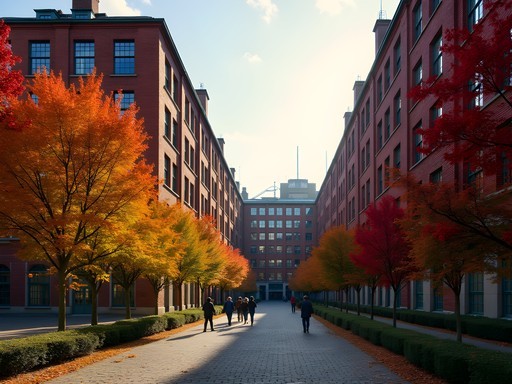





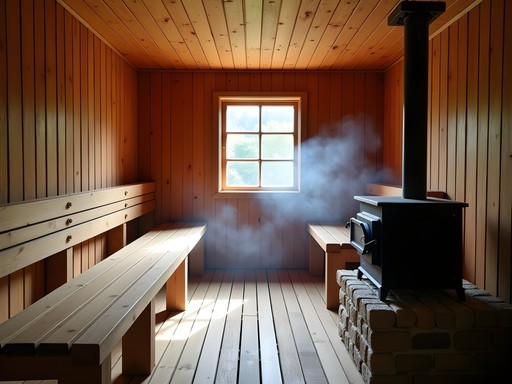




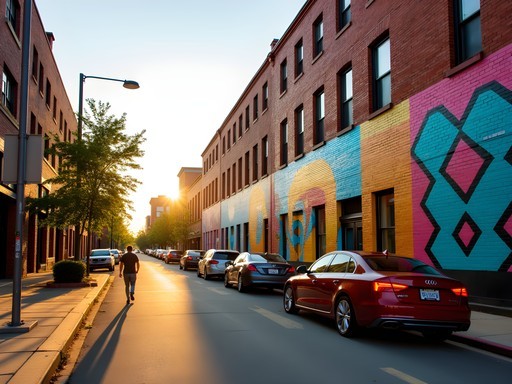
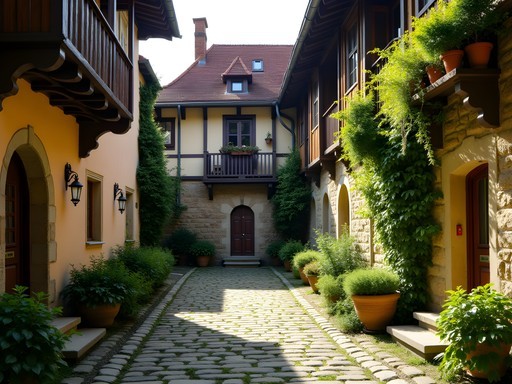
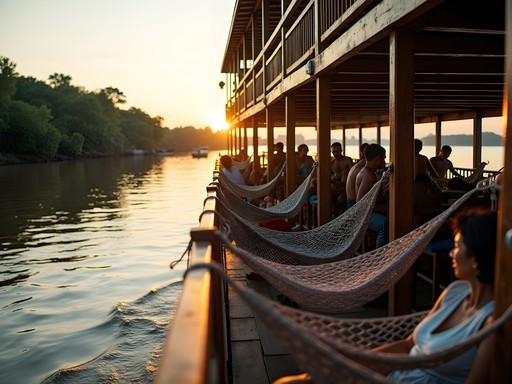
Comments
wanderlust_jane
Going to Tampere next month! Any food recommendations in these factory areas?
Leah Clark
Try Gastropub Nordic in Finlayson - great local beers and modern Finnish cuisine. Also, Tampere Market Hall is a must-visit for traditional food!
TravelwithMaria
I visited Tampere last summer and completely fell in love with Finlayson area! We had coffee at that quirky café inside the old factory and browsed through all the design shops. The contrast between the industrial architecture and the creative businesses inside was so inspiring. Did anyone else check out the rooftop bar at Moro Sky Bar? The views over the city and lakes were incredible at sunset!
nomadvibes
Ooh, I didn't know about the rooftop bar! Adding that to my list for my winter trip. Do you think it's worth visiting even in cold weather?
TravelwithMaria
Definitely! They have indoor seating with huge windows, and I've heard they sometimes have heated outdoor sections in winter. The snowy views would be magical!
FinlandFan22
Love this post! Your photos of Tammerkoski rapids are stunning!
globephotographer
How walkable is it between these districts? Would love to photograph all these spots but wondering if I need to rent a car or if public transport works well?
Leah Clark
Super walkable! Tampella and Finlayson are right across the rapids from each other. Hiedanranta is further (about 5km) but there's frequent buses or you can rent city bikes. I walked everywhere except Hiedanranta and used my pocket guidebook which had great walking maps.
nomadvibes
This looks so cool! How easy was it to get around between all these old factory areas? Is public transportation good there? Planning a trip to Finland this winter and wondering if Tampere is worth adding to my itinerary!
Leah Clark
Absolutely worth visiting! Public transport in Tampere is excellent - buses run frequently and the city center is very walkable. Most of these factory districts are within walking distance of each other along the rapids. For winter, I'd recommend getting a day pass for the buses though - it gets pretty cold!
nomadvibes
Thanks for the tips! Definitely adding it to my itinerary then. Any specific winter activities you'd recommend there?
Leah Clark
The sauna culture is amazing in winter! Check out Rajaportti Sauna - it's Finland's oldest public sauna still in operation. Also, the Vapriikki museum complex (in another converted factory!) is perfect for those cold days. And don't miss the Moomin Museum if you're into that!
nomadvibes
Perfect! I've got my winter boots ready for the trip. Can't wait to experience Finnish winter and these cool industrial spaces!
Douglas Bradley
Fantastic piece on Tampere's industrial transformation, Leah! I visited last year and was equally captivated by how seamlessly they've blended historical preservation with modern functionality. The Finlayson area particularly impressed me - the way they've converted those massive factory spaces into galleries and startups while keeping the industrial character intact is urban planning at its finest. Did you get a chance to visit the Finnish Labour Museum Werstas? Their exhibits on the textile industry history provided fascinating context to the buildings I was exploring. Tampere really demonstrates how post-industrial cities can reinvent themselves without erasing their heritage.
Leah Clark
Thanks Douglas! Yes, I did visit Werstas - such an insightful museum! The personal stories of the factory workers really brought the history to life. I was particularly moved by the women's labor movement exhibits.
Douglas Bradley
Absolutely! Those personal narratives are what make industrial history so compelling. Did you try any of the cafés in the old factory buildings? I found them to have such unique atmosphere.
Leah Clark
Yes! I spent a lovely afternoon working from Pyynikin Brewhouse in Finlayson. The contrast of laptops and lattes in that raw industrial space was perfect.
moondiver1664
Those rapids photos are STUNNING! 📸 The light hitting the water is magical. Adding Tampere to my bucket list RIGHT NOW!
globephotographer
What camera settings did you use for those water shots? The motion blur is perfect!
Leah Clark
Thanks! Shot those on my Sony a7III with a slow shutter (about 1/15) and a ND filter since it was bright. Early morning or evening gives the best light on the rapids!
Fatima Sims
Leah, this brings back memories! I visited Tampere last year and was blown away by how they've transformed these industrial spaces. The Finlayson area was my favorite - spent hours in those quirky shops and that amazing bookstore café. Did you get a chance to try the brewery in the old factory? Their raspberry sour was incredible. The contrast between the harsh industrial architecture and the creative energy inside is what makes these places so special.
Leah Clark
Yes! The brewery was fantastic - I actually went twice. And that bookstore café was where I wrote most of this post!
Fatima Sims
Perfect writing spot! Did you check out the underground tunnels tour? I missed it and still regret it.
Leah Clark
I did! It was surprisingly extensive. Definitely worth booking ahead if anyone's planning to visit.
greenbackpacker
Never thought of Finland for urban exploration! Those brick factories look amazing.
Hunter Thompson
Great post about Tampere! I'm planning to visit Finland next month as part of my Scandinavian backpacking trip. How walkable is it between these different factory districts? And is there a particular order you'd recommend seeing them in? I usually travel with my travel journal to sketch urban landscapes, and these industrial-turned-cultural spaces sound perfect for that!
Leah Clark
Hey Hunter! Tampere is super walkable - you can easily stroll between Finlayson and Tampella in about 15-20 minutes along the Rapids Walk. I'd recommend starting at Finlayson in the morning (hit the museums early), lunch by the rapids, then exploring Tampella in the afternoon. Hiedanranta is a bit further out but worth it if you have time - just hop on tram #3 or #5. The lighting for sketching is particularly good in the late afternoon at Tampella!
Hunter Thompson
That's brilliant, thanks for the detailed route suggestion! I'll definitely follow that order. Any particular cafes along the way where I could sit and sketch for a while?
summergal
Hunter, try Pyynikki Observation Tower Cafe if you make it up there - amazing views of the city and the best doughnuts in Finland!
Venture X
Premium card with 2X miles, $300 travel credit, Priority Pass